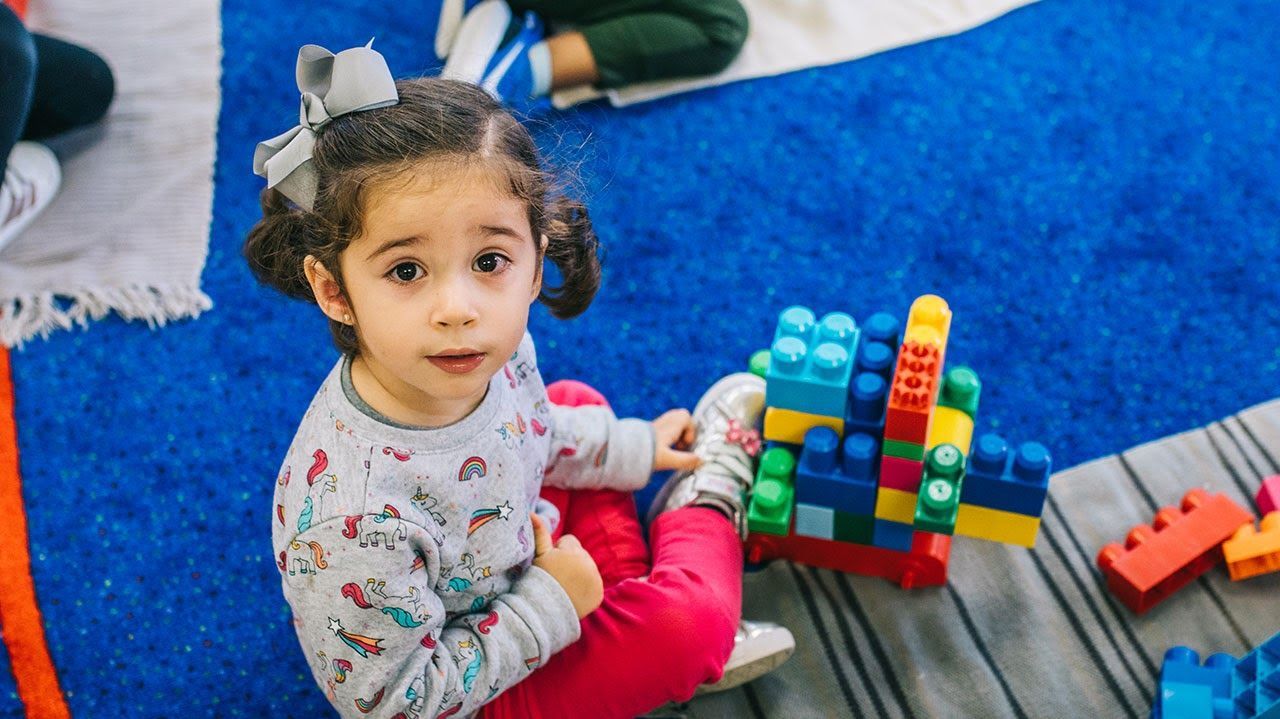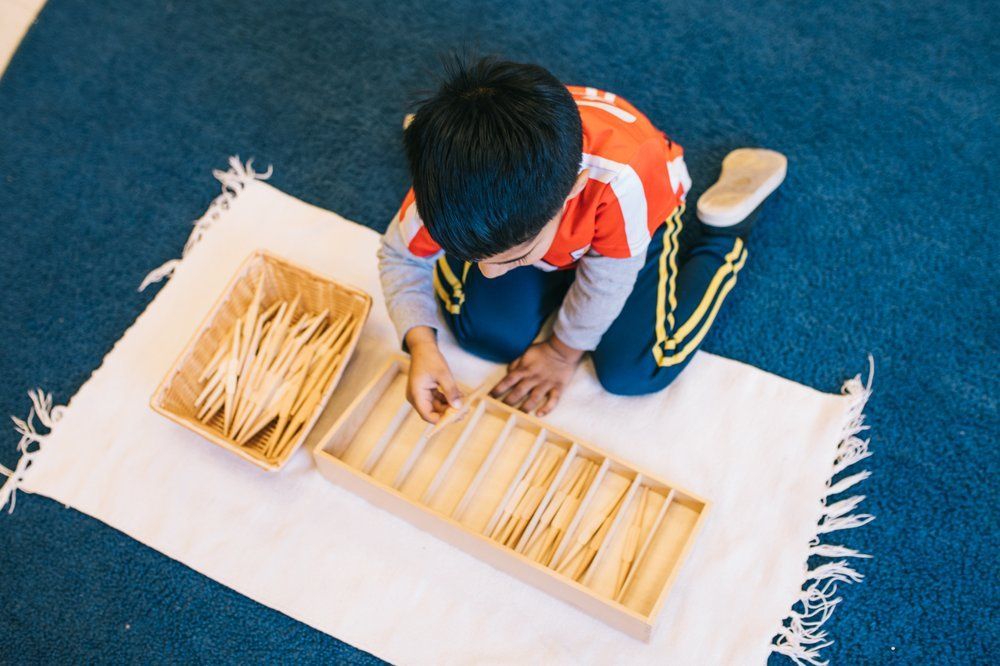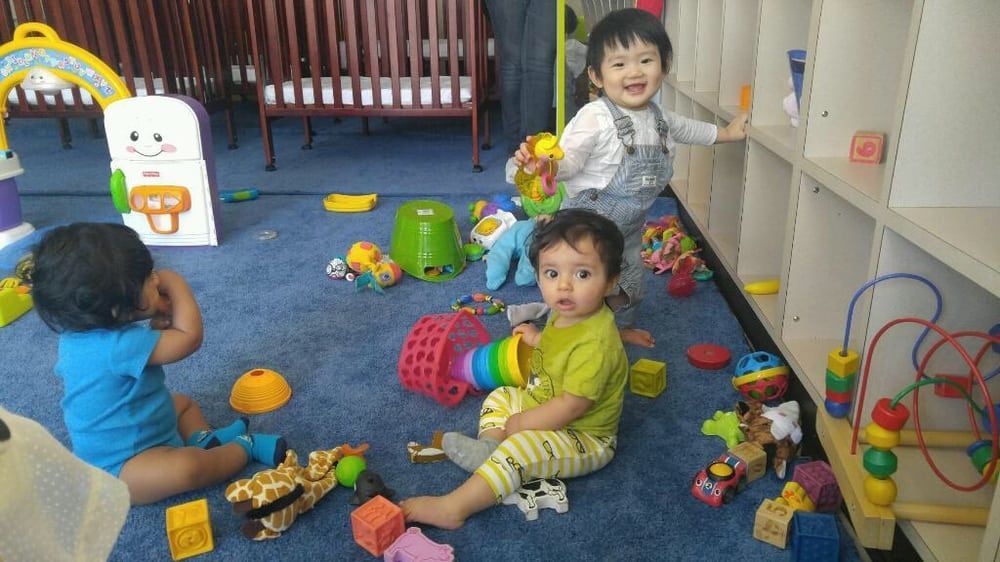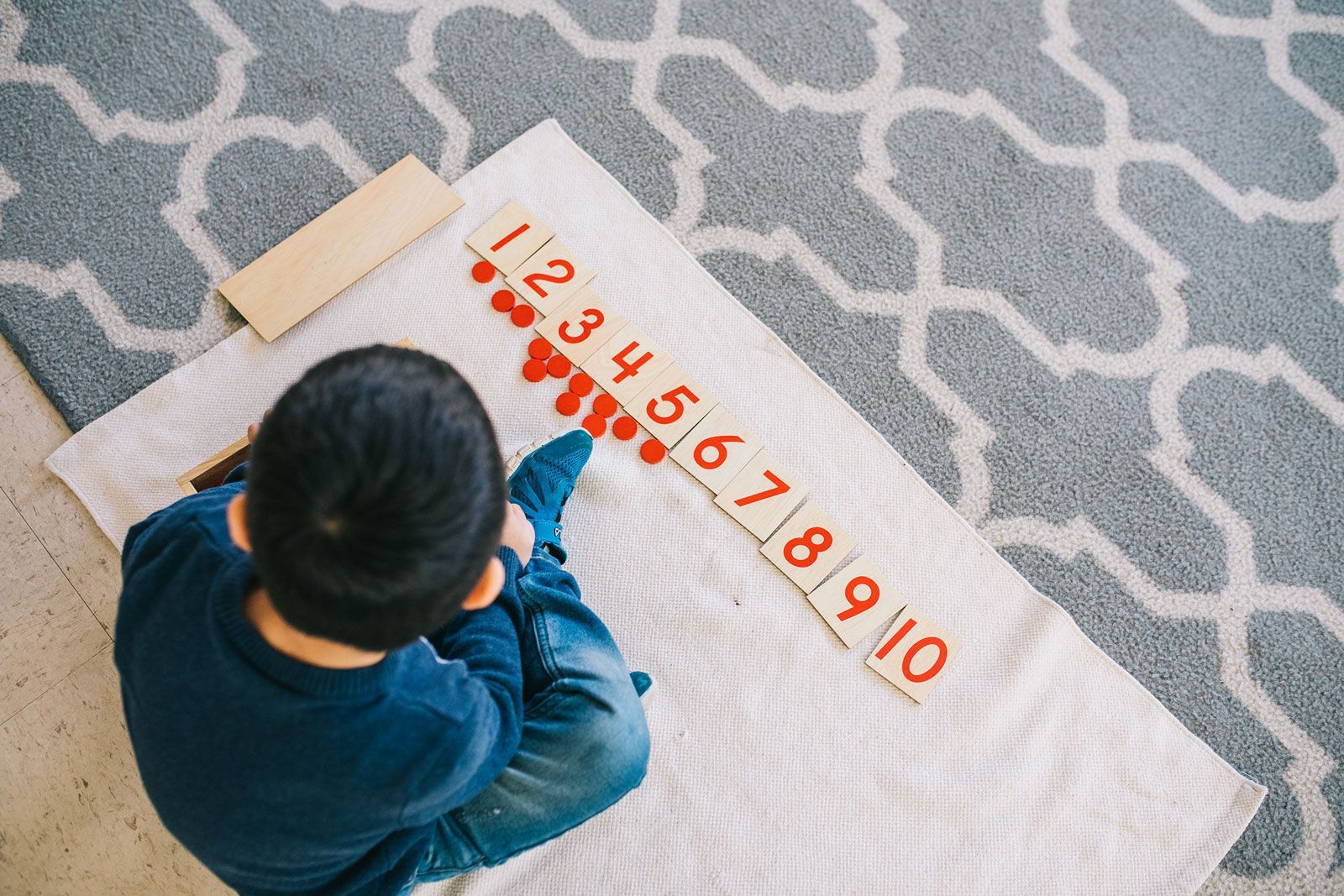Check our Programs
Nido Program – 12 weeks to 18 months
“Of all things, love is the most potent.”
– Dr. Maria Montessori
A Nido classroom is a nurturing environment for infants and young children. In Italian Nido means nest or home. The Nido classroom is designed to support a child's developmental needs, such as eating, walking, and talking. The aim of our Nido room is to foster the development of basic trust and assist in the normal development of the personality. Basic trust develops in an environment where people respond appropriately to the infant’s communication of needs to be loved, respected, and accepted.
Infants learn through their senses. They learn by sound, touch, smell, watching, and freedom of movement. Freedom to move is essential to the development of the infant’s potential. There is plenty of space in our Nido for tummy time, crawling, and walking. Feeding is done one on one. When the child can sit up on his or her own, then they begin to learn to feed themselves using utensils while sitting in a chair at the table.
To begin to foster independence in the infant, they participate in their daily routines of care and feeding. Infants must be spoken to in the language with which they will communicate. The child is spoken to throughout the morning and being told when they are being changed or fed or that they are heard if they are crying. These communications begin to build the trust needed between the child and the caregiver.
“The greatness of the human personality begins at the hour of birth.”
– Dr. Maria Montessori
Toddler Program – 18 months to 3 years old
“The first essential for the child’s development is concentration; the child who concentrates is immensely happy.” Dr. Maria Montessori
The Toddler community at Montessori Scholars Academy is a very busy environment. It is designed to foster independence, and self-motivated learners. The toddler children engage in hands-on activities that develop their hand eye coordination, creativity and critical thinking. In this mixed age group, the children have ample opportunities for social experience with peers younger and older than them. The toddler community has a two hour work cycle where they are learning toilet independence, care of self, care of the environment, language, and sensory-motor development. The pillars of the toddler curriculum have a strong link between physical activities and intellectual development all within a nurturing, safe, and loving environment.
Toilet Independence Toilet independence is a pivotal time for a toddler. This is when they become self-sufficient and love doing things for themselves. When a toddler begins to show signs of toilet independence, usually between 18 and 20 months, this will be the critical time to begin the toilet learning for the child. This is a team effort between the classroom and home. It is important to look for these signs and act upon them. If this sensitive period is missed, the toilet learning and toilet independence may take longer. A toddler may only move to the Primary environment when they are toilet independent and able to care for themselves. This is usually between two and a half to three years old.
“Never help a child with a task at which he feels he can succeed.”
- Dr. Maria Montessori
Primary Program – 3 to 6 years old
“Education is not something which the teacher does, but a natural process which develops spontaneously in the human being.”
- Dr. Maria Montessori
The Primary classroom is a multi-age community of children ages 3 to 6. This is a three-year cycle where the foundation of learning is created for the first two years. During the three-year cycle of the classroom, the child is able to advance at their own pace through individualized lesson plans. The children have a 3-hour block of uninterrupted work between 8:30 a.m.–3:30 p.m.
The Guide presents one-on-one lessons and small group lessons. The Guide observes the child weekly to understand what the child has learned and what lesson to present next. When your child is three and four, he or she will experience being the "learner" and when they are four and a half to six, they will experience being the "teacher". What better way to become an expert than to teach the lesson!
The third year is critical to completing the learning process. In this third year the child is developmentally ready and excited to begin to bring everything she has learned thus far together. This is where you will see the more advanced concepts of addition, subtractions, multiplication and division emerge. The child not only knows the symbol of 1000 but understands the quantity of 1000. The children are reading simple sentences and then as the year progresses, more complex words and sentences. They begin to write stories about the world around them. This third year is what prepares the child to be independent, enhances the child’s social skills, problem solving skills and instills his or her lifelong love for learning.
“The essence of independence is to be able to do something for one’s self.”
- Dr. Maria Montessori




